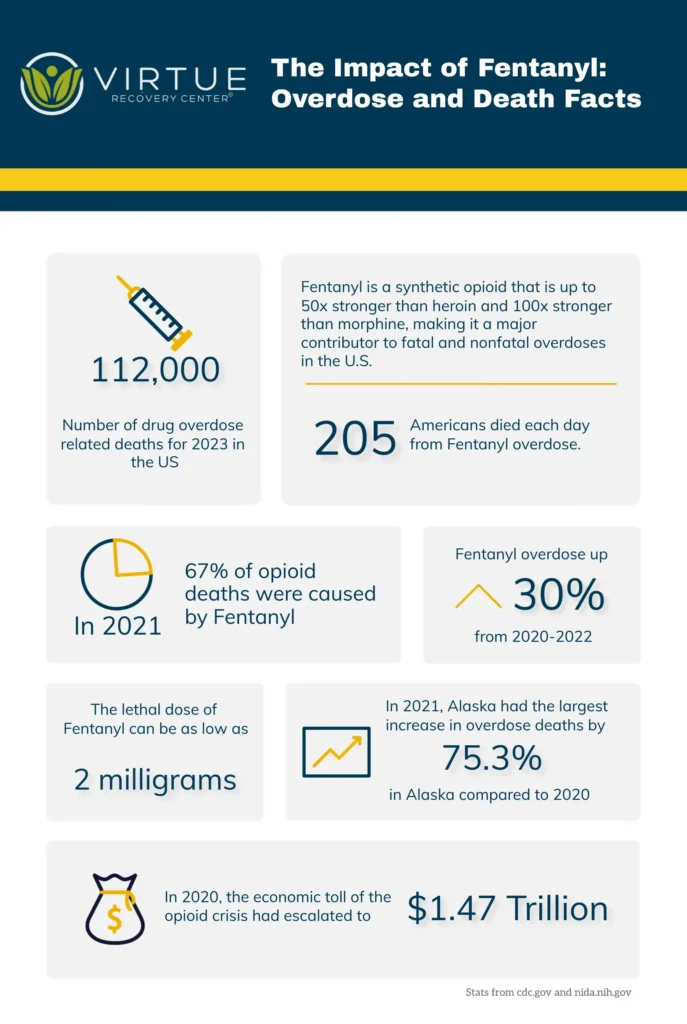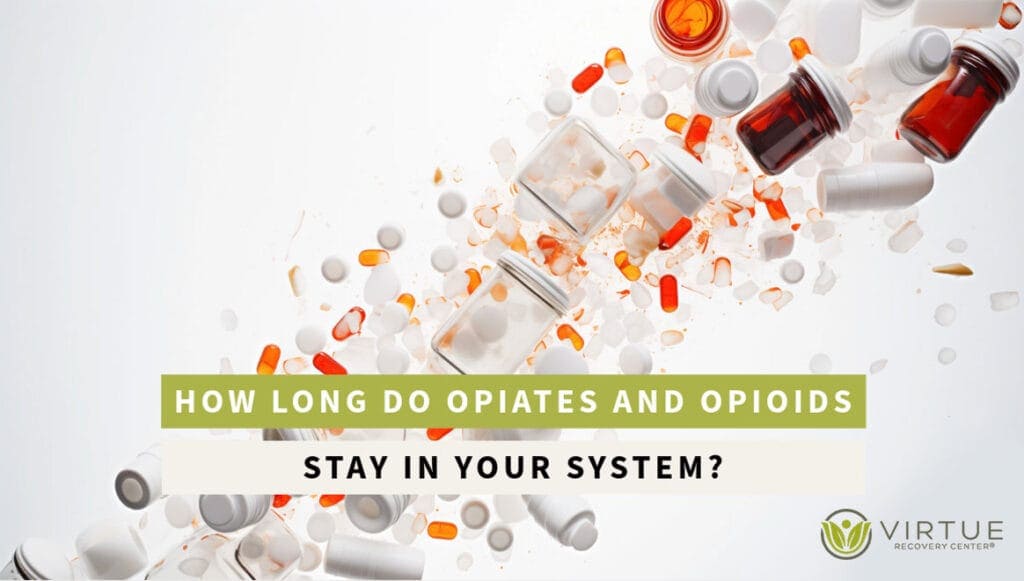Key Takeaways:
- Opiates vs. Opioids: Opiates are naturally derived from the opium poppy plant, while opioids include both natural opiates and synthetic substances.
- Addiction Risks: Both opiates and opioids are highly addictive due to their impact on the brain’s reward system, leading to physical and psychological dependence.
- Common Testing Methods: The presence of opiates and opioids is commonly detected through urine, blood, saliva, and hair tests.
- Treatment Approaches: Treatment centers offer detoxification, therapy, medication-assisted treatment (MAT), and aftercare planning to support recovery from addiction.
- Longevity in System: The duration opiates and opioids stay in the system varies, influenced by factors like drug type, dosage, and individual metabolism.
- Prevention and Education: Awareness and education about the risks and safe use of these substances are crucial in preventing misuse and addiction.
What are opioids?
Opioids are a class of drugs that include both natural and synthetic substances. They are primarily known for their effective pain-relieving properties. Opioids work by binding to opioid receptors in the brain, which control pain, pleasure, and addictive behaviors. This class encompasses natural substances like morphine and codeine, synthetic drugs such as fentanyl and methadone, and semi-synthetic compounds including hydrocodone and oxycodone. While opioids are widely used in medical treatments for pain relief, they also carry a high risk of addiction and misuse.
What are opiates?
Opiates are naturally occurring substances derived from the opium poppy plant. They include drugs like heroin, morphine, and codeine, which are primarily used for their potent analgesic (pain relieving) properties. Opiates work by binding to specific receptors in the brain, reducing the perception of pain. Despite their therapeutic uses, opiates are also known for their high potential for addiction and abuse. They can induce feelings of euphoria, making them susceptible to misuse, leading to significant health and social issues.
How are opiates and opioids different From One Another?
Both opiates and opioids fall under the category of “narcotics,” a term derived from the Medieval Latin ‘narcoticus’ and Greek ‘narkoun,’ which means to induce sleep or numbness. Opiates and opioids, while often used interchangeably, refer to different substances. Opioids are a broader category that includes opiates as well as synthetic or semi-synthetic substances like fentanyl, methadone, hydrocodone, and oxycodone. Both opiates and opioids bind to opioid receptors in the brain and are known for their pain-relieving, pleasurable, and addictive properties. However, it’s important to note that the natural origin of opiates doesn’t make them any less harmful or addictive than synthetic opioids.
What are some well-known names of opioids and opiates?
The most commonly abused opiates and opioids include a range of prescription medications as well as illegal drugs. These substances are known for their pain-relieving properties but also carry a high risk of addiction and abuse.
- Vicodin (Hydrocodone/Acetaminophen): Often prescribed for severe pain, Vicodin is one of the most abused opiates in the U.S., not just among opioids but across all prescription drugs.
- Heroin: An illegal drug, heroin is a synthesized form of morphine and can be injected, smoked, or snorted. Its use is risky, especially when cut with other substances.
- Morphine: Extracted from poppy plants, morphine is commonly used in medical settings and is known for being one of the most commonly abused opiates. It can be administered orally or intravenously.
- Codeine: Similar to morphine, codeine is used to relieve pain and is one of the most commonly abused opiates.
- Fentanyl: This drug has seen increasing abuse in recent years. Fentanyl is a potent narcotic, often compared to heroin, and is used for sedation and severe pain relief.
- Hydrocodone: Found in various forms, hydrocodone is used as a pain reliever and cough suppressant. It is commonly taken orally, intravenously, or snorted.
- Hydromorphone (e.g., Dilaudid, Exalgo, Palladone): A derivative of morphine, this semi-synthetic opioid is used for moderate to severe pain treatment.
- Meperidine (Demerol): Used for decades to alleviate moderate to severe pain, Demerol is most often administered via IV, especially in hospital settings.
- Methadone: Designed for treating opiate withdrawal effects, methadone is a long-acting opioid that helps mitigate withdrawal symptoms and aid in recovery.
- Oxycodone (e.g., Oxycontin, Percodan, Percocet): A narcotic medication used for severe pain relief, oxycodone has seen a significant rise in prescriptions and related emergency room visits due to misuse.
- Oxymorphone (e.g., Opana): Developed as a semi-synthetic opioid analgesic, oxymorphone is used preoperatively and for pain relief during childbirth.

Based on the research conducted, the duration for which opiates and opioids remain in the system varies considerably depending on several factors. Opioids are a class of drugs known for their effectiveness in pain relief, but they are also recognized for their potential for addiction. The longevity of opioids in the system is influenced by the type of opioid, the amount consumed, individual medical history, weight, and gender, among other factors.

What is the half-life of popular opioids and opiates?
Long-acting opioids like Oxycontin, Methadone, and Butrans have a different duration of effect compared to short-acting opioids such as Codeine, Morphine, and Hydrocodone. Rapid-onset opioids like Intranasal and Sublingual Fentanyl also vary in their duration of effect. The elimination half-life, the time the body takes to metabolize and remove half of the drug dose, plays a crucial role. Generally, it takes about five half-lives to eliminate a drug from the body.
How Easy Is It To Get Addicted to Opioids and opiates?
The risk of addiction to opioids and opiates is notably high due to their potent effects on the brain’s reward system. When these substances are used, they release excessive neurotransmitters like dopamine, creating pleasure and euphoria. This intense experience can lead to a strong desire to continue using the drug to replicate these feelings. Moreover, with regular use, the body develops a tolerance, requiring higher doses to achieve the same effect. The combination of the drug’s pleasurable effects and the body’s increasing tolerance can rapidly lead to physical and psychological dependence, making opioids and opiates highly addictive.
How Long Do Opiates and Opioids Stay In Your System Compared to Other Drugs?
The detection of opioids in the system also depends on the testing method. Urine tests are the most common and can detect opioids for up to seven days, while saliva tests have a shorter detection window of 24 to 48 hours. Hair testing can detect drug use for much longer periods, up to 90 days. The exact duration also depends on the specific opioid used. For example, heroin metabolites can be detected for about three days, while substances like oxycodone and hydrocodone have similar detection timelines.
What Are the Most Common Ways To Test for Opiates and Opioids In The System?
The most common methods for testing the presence of opiates and opioids in the system are:
- Urine Tests: Widely used for their convenience and ability to detect recent drug use.
- Blood Tests: Provide accurate results but have a shorter detection window.
- Saliva Tests: Less invasive, suitable for detecting very recent drug use.
- Hair Tests: Can trace drug use over a longer period, sometimes up to 90 days.
The most common methods for testing the presence of opiates and opioids in the system are urine, blood, saliva, and hair tests. Urine tests are widely used due to their ease and ability to detect drug use for several days after consumption. Blood tests offer a shorter detection window but are more invasive. Saliva tests provide quick results with a shorter detection period, while hair tests can trace drug use over a much longer period, up to 90 days. Each testing method has its specific applications and limitations, chosen based on the required detection period and the nature of the test.
It’s important to note that the method of administration, frequency of use, and individual health factors such as liver and kidney function can also significantly impact how long opioids are detectable in the system. Additionally, patients who take opioids as prescribed for pain relief may experience different withdrawal timelines compared to those who misuse these drugs.
How Can Someone Get Help That is Suffering from An Opioid/Opiate Addiction?
Treatment centers play a vital role in aiding individuals suffering from opioid or opiate addiction. These facilities provide a structured environment focusing on recovery through various therapeutic methods. Typically, treatment begins with a medically supervised detoxification process, which helps manage withdrawal symptoms in a safe and supportive setting.
Following detox, patients engage in a combination of individual and group therapies, such as Cognitive Behavioral Therapy (CBT) and counseling, which are designed to address the underlying causes of addiction. Many treatment centers also offer medication-assisted treatment (MAT), using medications like methadone, buprenorphine, or naltrexone to reduce cravings and withdrawal symptoms, thus supporting long-term recovery. Additionally, treatment centers often provide educational programs, relapse prevention training, and aftercare planning to ensure ongoing support and help patients rebuild a healthy, substance-free life.
For more detailed information on the duration of opioids in the system and the factors affecting it, you can refer to resources like Virtue Recovery Center. Additionally, to understand treatment options and more about opioid addiction, you can visit Virtue Recovery Center’s pages on opioid treatment and general treatment information (https://www.virtuerecoverycenter.com/treatment).
Looking for more information on how long substances stay in your body? Check out our other article on how long nicotine stays in your system.
FAQ
Q: What are opiates and opioids?
A: Opiates are naturally derived from the opium poppy, like morphine and codeine. Opioids include both opiates and synthetic drugs like fentanyl and oxycodone.
Q: How addictive are opiates and opioids?
A: They are highly addictive due to their impact on the brain’s reward system, often leading to dependence and tolerance with regular use.
Q: What are common methods for testing opiates and opioids in the system?
A: The most common methods are urine tests, blood tests, saliva tests, and hair tests, each with varying detection windows.
Q: How long do opiates and opioids stay in your system?
A: The duration varies based on the type of drug, dosage, and individual metabolism, but they can generally be detected for days to weeks after use.
Q: Can you become addicted even when prescribed opiates or opioids?
A: Yes, even prescribed use can lead to addiction due to their potent effects on the brain’s reward pathways.
Q: What factors influence addiction to these substances?
A: Factors include dosage, frequency of use, method of administration, and individual physiological characteristics.
Sources
Drugs.com – “Opioid vs Opiate – What’s the difference between them?” (2023).
National Institute on Drug Abuse (NIDA) – “Prescription Opioids DrugFacts” (nida.nih.gov).
Mayo Clinic – What are opioids and why are they dangerous?” – Mayo Clinic, (www.mayoclinic.org).
“Understanding Opioid Use Disorder” – Harvard Medical School, health.harvard.edu.
“Opioid Overdose Crisis” – National Institute on Drug Abuse (NIDA), www.drugabuse.gov.



























